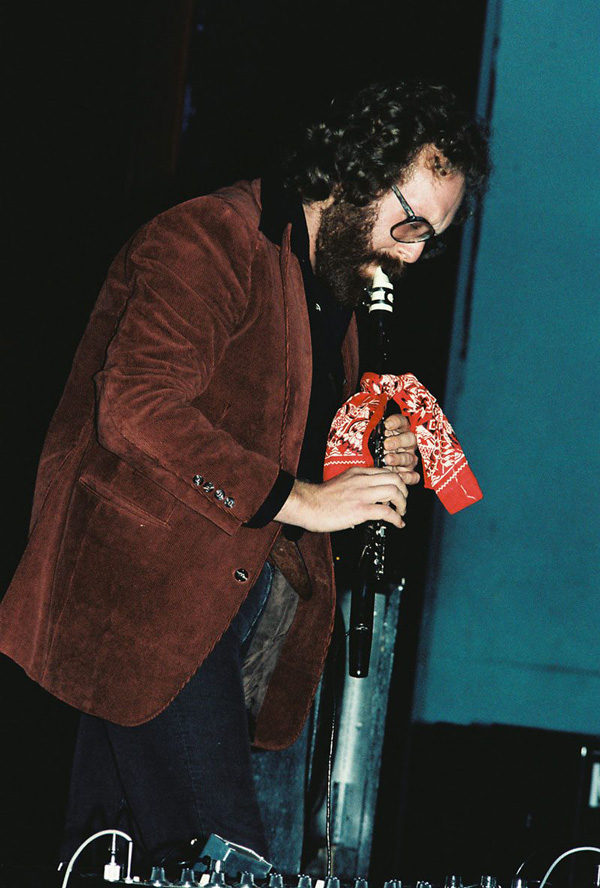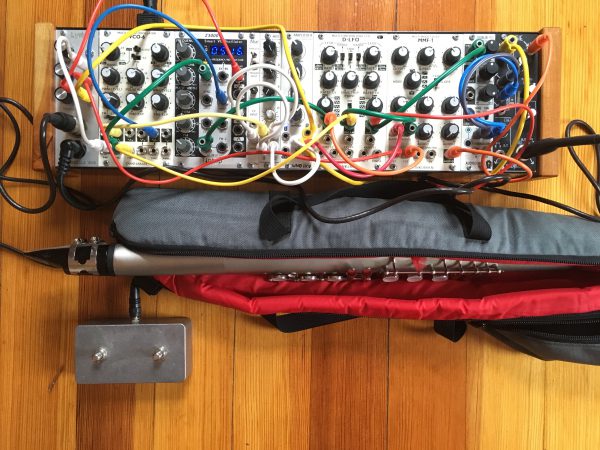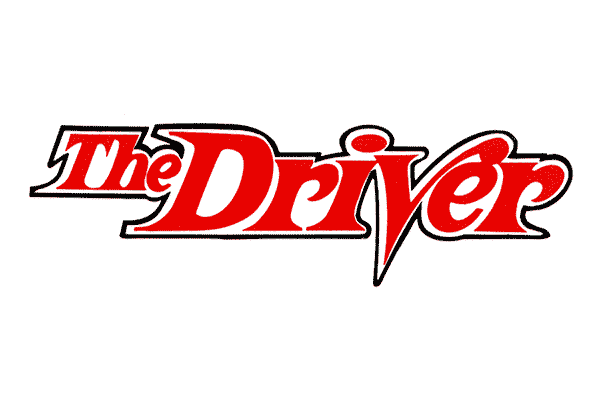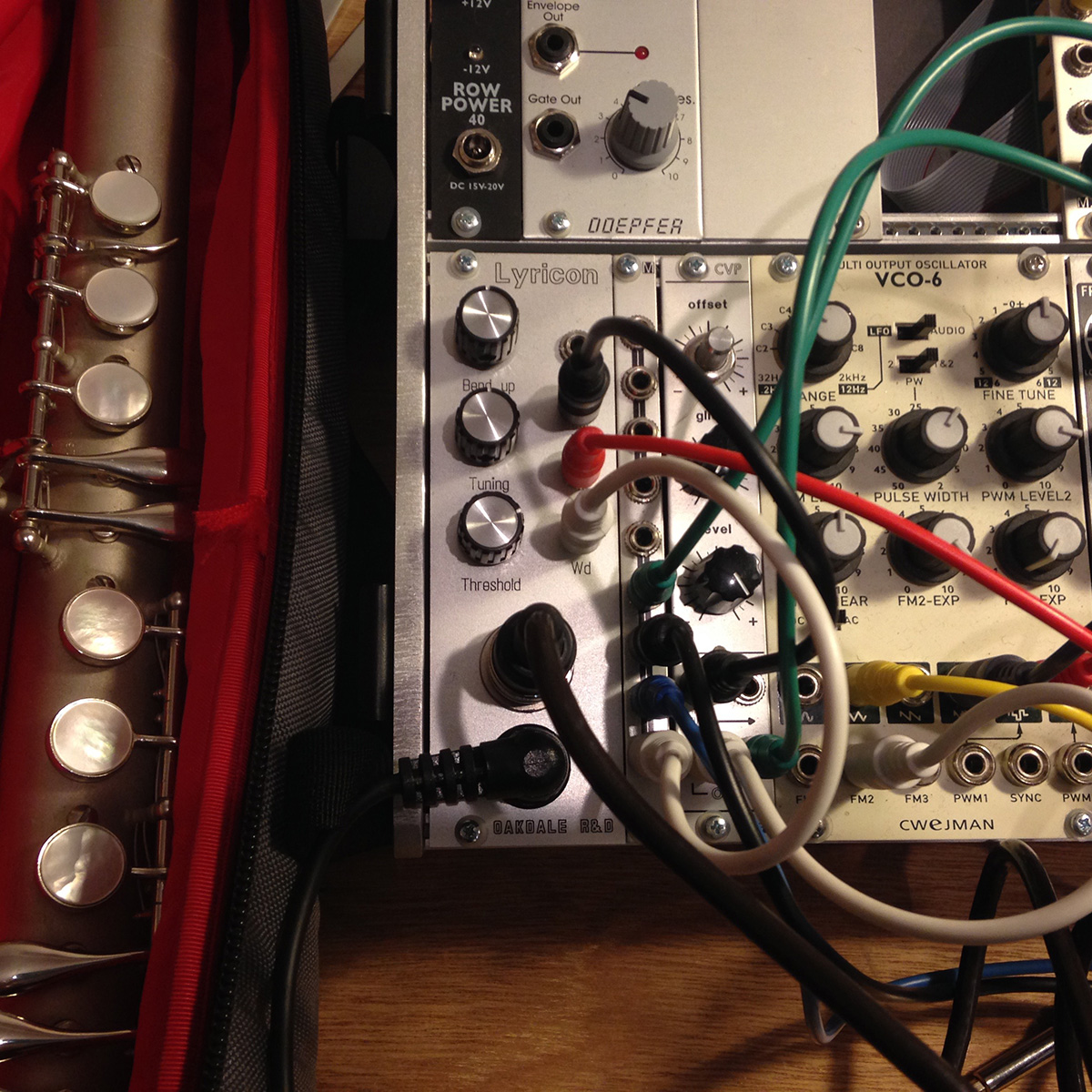The Lyricon
The Lyricon is an analog electronic wind synthesizer made in the 1970’s by Computone. I found mine in 1999 in a junk store, and had it repaired by the inventor, Bill Bernardi. These days I connect my Lyricon Driver to a Eurorack modular synth, and have integrated it in my bands and compositions.
My Lyricon story
I found my Lyricon I in 1999 in an antique store in Boston, but it was not functioning. I asked the inventor Bill Bernardi to repair it, and met him at his repair shop. He told me passionately the story of the invention and production. “I spent 5 years developing the instrument, I made 4 or 5 prototypes. I studied the acoustics of wind instruments, and made a synthesizer that works with additive synthesis to imitate the overtones. The transducer contains a membrane and a photo cell, which translate breath and attack into voltages. After the first Lyricon we got requests from players to simplify the synthesizer and add an extra oscillator, so they could play parallel intervals. So we developed the Lyricon II and the Wind Driver. The synthesizer in the Lyricon II is totally different and the Wind Driver has to be hooked up to an extern analog synthesizer. They were mass-produced by Selmer. My favorite is still the Lyricon I, because it has more control features and a better synthesizer.
Soon after the introduction various jazz and fusion musicians like Sonny Rollins, Roland Kirk, Wayne Shorter and Tom Scott started experimenting with it, not always with the most successful artistic results. Bernardi: “Roland Kirk spent 12 days with me to learn the instrument. He drove up from NY with some other musicians. I made 2 consoles onto one body and mounted braille onto the keys. Beautiful guy. Stan Getz wanted me to give him one for free, but I refused. I felt he had just to pay like everyone else…”
But there is also the sad story of how the factory had to close in 1980, because Yamaha started developing the WX7, a midi instrument, targeting to a bigger market. Bernardi: “Midi doesn’t work very well with a wind instrument, because it’s not precise enough.” For years Bernardi was dreaming of his come back: “When I retire, I’m going to make a Lyricon III, using all the new technology available. I already have a prototype” he said, showing an abstract wooden saxophone shape. “I had a friend who’s a sculptor design the body. It’ll be amazing to be able to include presets and more up-to-date features. None of that existed when I made the first Lyricons.”
The Lyricon is a beautifully made and fantastic sounding synthesizer (if in good shape!), with all the dynamics and accuracy of a saxophone or clarinet. It can produce fat and funky bass lines, whistling flute tones, dirty moog sounds and barely audible pitches with great dynamics. But it has to be treated with love and care, since not all the parts are still available, and for years Bill Bernardi was the only one who could repair it. “I tried at least a hundred different materials for the membrane of the transducer, to find the perfect one. It’s not rubber, it’s some sort of fiber. When you don’t play the Lyricon for a long time, the membrane gets hard and needs to be replaced. I have plenty of them, I stocked up for years on them. The photo cell is very hard to get too, they don’t make them anymore, I bought all of the ones I could still find.” Bernardi seemed happily surprised by the renewed attention for the Lyricon, which seems to come out of a retro seventies trend. “For years nobody was interested in the Lyricon but these days I get all the calls from Berklee kids who have a WX7 and an EWI, because Michael Brecker plays it. They’ve heard about the Lyricon and want to know what it is.”
In February 2014 Bill Bernardi passed away after a long battle with cancer, which made it hard for him to sustain a Lyricon repair business. But he left a treasure trove of schematics, manuals, notebooks and spare parts for the Lyricons in his basement. Electrical engineer David O’Brien is working with the Bernardi family and has started a repair business, to continue the repair work that Bill was not able to do, and to keep the Lyricon legacy alive. I have been using the Lyricon Wind Driver that I bought from Bill in 2004 (brand new, refurbished and optimized at the time) with a Cwejman S2 pre-patched analog synth. Wowa Cwejman was so kind to customize this rare instrument (only about 10 S2’s were built) for the Lyricon. But these days I use a Eurorack synth with modules by Cwejman, Make Noise, WMD/SSF, Doepfer, Audio Damage and Mutable Instruments. David O’Brien has custom made an interface for me that takes the Lyricon body’s plug directly. It works fantastic, and I have used it on most of my recordings in the last ten years.




